|
Printables |
PowerPoints |
Online exercises |
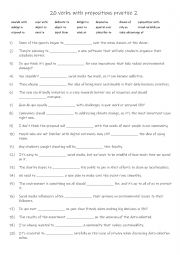
|
B1-B2 20 verbs with prepositions practice 2
Students should learn verb + and preposition phrasal verbs combinations because they are essential for effective communication in both spoken and written English. These expressions help students speak more naturally and fluently, making them sound more like native speakers. They also improve comprehension, as many of these phrases have meanings tha...
Level: intermediate
Age: 10-100
Type:
Downloads: 104
|
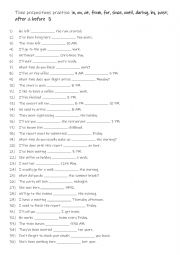
|
A1+-A2 Time prepositions practise in, on, at, from, for, since, until, during, by, past, after & before 3
Learning time prepositions like in, on, at, from, for, since, until, during, by, past, and after is important for students because they are essential for expressing time relationships clearly and accurately. These prepositions help students talk about when things happen, how long actions last, and their sequence in time. Mastering them allows stude...
Level: elementary
Age: 8-100
Type: worksheet
Downloads: 122
|
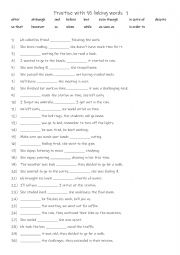
|
A2+-B1 Practise with 15 linking words 1
Students should learn these linking words because they are essential for creating complex, logical sentences that convey relationships such as contrast (although, however), cause and effect (so that, in order to), and time (before, as soon as). Mastering them enhances writing and speaking by making language more sophisticated and engaging, as stude...
Level: intermediate
Age: 9-100
Type:
Downloads: 102
|
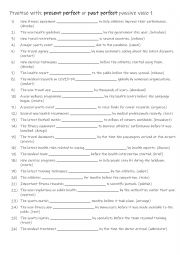
|
B1-B2 Practise with present perfect or past perfect passive voice 1
Students should learn to practise the present perfect and past perfect passive voice because these structures are vital for expressing completed actions with emphasis on the results rather than the doer. The present perfect passive (e.g., "The work has been finished") is used to discuss actions that affect the present, while the past perfect passiv...
Level: intermediate
Age: 10-100
Type:
Downloads: 115
|
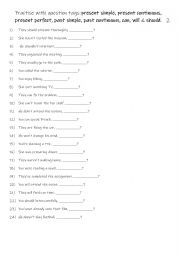
|
Practise with question tags: present simple, present continuous, present perfect, past simple, past continuous, can, will & should. 2
Learning question tags with various tenses (such as Present Simple, Present Continuous, Present Perfect, Past Simple, Past Continuous, Can, Will, and Should) helps students communicate more naturally and confidently in English. Question tags are used to confirm information or seek agreement, making conversations smoother and more engaging. Practici...
Level: intermediate
Age: 10-100
Type:
Downloads: 115
|
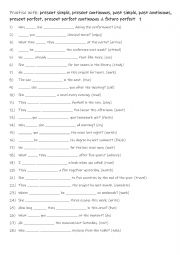
|
A2+-B1 Practise with present simple, present continuous, past simple, past continuous, present perfect, present perfect continuous & future perfect 1
Learning key tenses such as the present simple, present continuous, past simple, past continuous, present perfect simple, and present perfect continuous enables students to communicate clearly by expressing actions and events with accuracy. These tenses cover a wide range of contexts, from daily routines and ongoing activities to completed actions ...
Level: intermediate
Age: 9-100
Type:
Downloads: 120
|
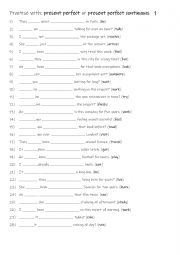
|
A2+-B1 Practise with present perfect or present perfect continuous 1
Students should practice the present perfect and present perfect continuous tenses because they help express actions or experiences connected to the present. The present perfect describes past actions with current relevance (e.g., "I have visited Paris"), while the present perfect continuous emphasises ongoing actions or their duration (e.g., "I ha...
Level: intermediate
Age: 10-100
Type:
Downloads: 126
|
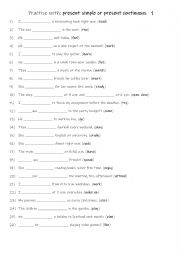
|
A1-A2 Practise with present simple or present continuous 1
Students should practice the present simple and present continuous tenses because they help distinguish between routines or facts (present simple) and ongoing or temporary actions (present continuous). Mastery of these tenses boosts confidence in daily conversations, ensures clarity in expressing different types of actions, and forms a foundation f...
Level: elementary
Age: 8-100
Type:
Downloads: 113
|
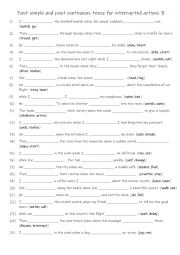
|
A1+-A2 Past simple and past continuous tense for interrupted actions 3
Learning the past simple and past continuous tenses for interrupted actions is essential because they help students describe events that were happening in the past when something else occurred. The past continuous is used to show the action that was in progress at a specific time in the past, while the past simple is used to describe the action tha...
Level: elementary
Age: 8-100
Type:
Downloads: 119
|
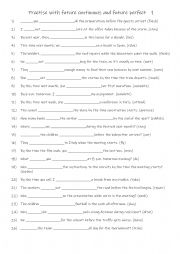
|
A2-B1 Practise with future continuous and future perfect 1
Students should practise the future continuous and future perfect because these tenses enable precise communication about future events. The future continuous describes ongoing actions at a specific time in the future, such as "I will be preparing dinner at 7 p.m. tomorrow," helping students discuss future activities in progress. The future perfect...
Level: elementary
Age: 9-100
Type:
Downloads: 115
|
|
|
|
|












